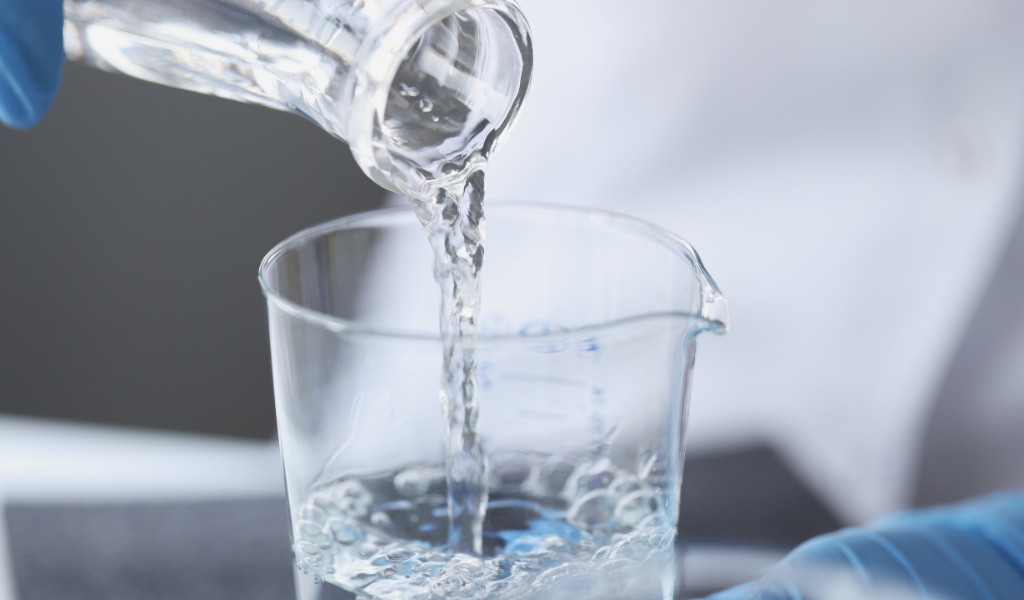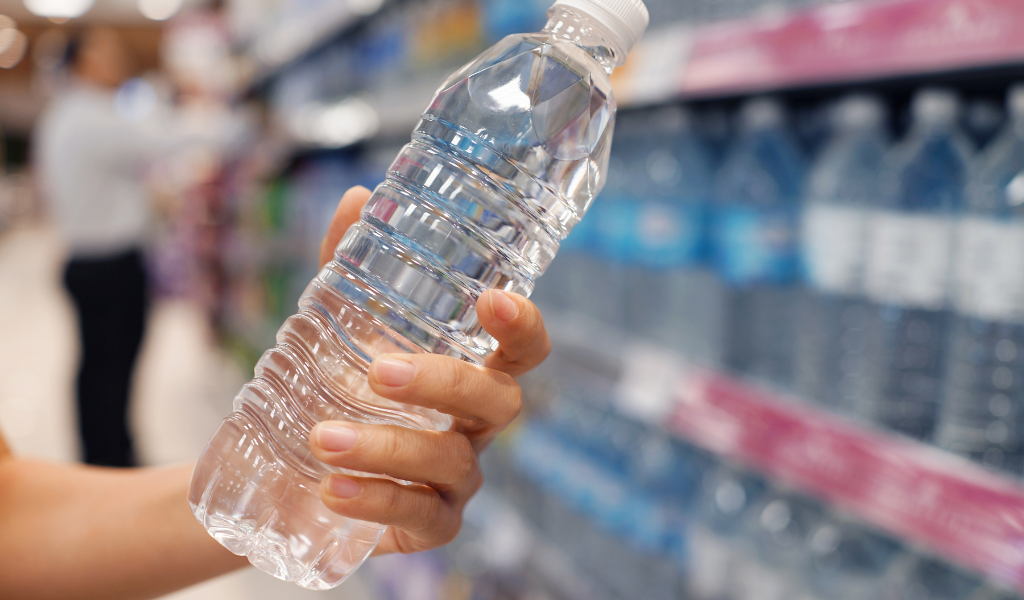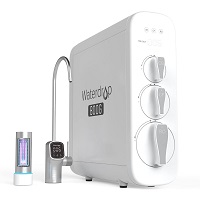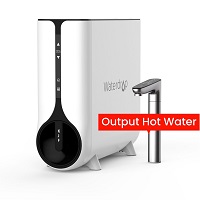Distilled water is a product of the distillation process, which entails heating water to produce steam and the subsequent condensing of the steam back into liquid form. Distilled water is known for its high purity because the distillation process removes harmful contaminants, minerals, and impurities from the water.
The high purity of distilled water makes it an essential water source for both personal and commercial consumption, especially in areas where water purity is crucial. For example, laboratories, pharmaceuticals, and manufacturing brands adopt distilled water as a critical component. Similarly, households use distilled water for steam irons and humidifiers.
This blog extensively discusses distilled water, its benefits, its shortage, and how you can make your distilled water at home.
What are the benefits of distilled water?
Distilled water offers a wide range of benefits, some of which are highlighted below;
1. It is a source of safe and optimal hydration.
If you prioritize drinking pure and safe water to stay hydrated, you should consider distilled water. The pure composition of this water type ensures the body gets sufficiently hydrated up to the cellular level. This, in turn, supports essential body functions like nutrient absorption, temperature regulation, digestion, and overall well-being.
2. It helps with detoxification.
Not only does distilled water ensures your body is not pumped with harmful water impurities, but it also helps get rid of the toxins and substances that impair your body’s functioning. Unlike tap water, which calcifies the arteries and brain, distilled water contains no foreign components that contribute to these situations. In addition, while tap water can potentially lead to the formation of kidney stones, distilled water lacks minerals, eliminating the likelihood of such occurrences.
3. It enhances physical activities.
Tap water may sometimes contain large amounts of calcium carbonate leading to the formation of hard water. Excessive calcium carbonate can lead to blood vessel calcification and arteriosclerosis, with symptoms such as high blood pressure, stroke, and heart attack.
4. It improves oral health.
Distillation removes fluoride as a component of hard water. Drinking distilled water ensures your teeth do not suffer from excessive fluoride, with the required fluoride coming only from your toothpaste instead of the water and the toothpaste. The teeth require fluoride to be healthy and strong. However, in excess amounts, it causes fluorosis.
5. It has several major industrial applications.
Distilled water is crucial to most pharmaceutical manufacturing processes and laboratory experiments. The very high purity of distilled water helps to reduce the chances of contamination, keep the results of processes accurate, and ensure that the integrity of delicate substances is not compromised. Every industry where accuracy and precision are essential requirements needs distilled water.
In addition, manufacturing processes, especially in automotive and electronics, require distilled water to run optimally. The purity of this water source guarantees no mineral accumulation and corrosion, thereby improving the functionality and lifespan of the machinery used.
Another sector where distilled water plays a vital role is cosmetics and personal care. Distilled water is an integral component of product formulation and quality, as it helps maintain purity and stability.
6. It helps to stay environmentally responsible.
The adoption of distilled water also contributes to environmental responsibility. For instance, industries that produce distilled water on-site can use fewer single-use plastic containers. This, in turn, reduces plastic waste and helps to protect the environment.
Is there a shortage of distilled water?
It has been three years after the COVID-19 pandemic, and the world is yet to fully recover from the period’s challenges. One of these challenges is the relative scarcity of essential items like distilled water across different parts of America. For example, according to a 2022 KSL news story, Utah residents had difficulty finding distilled water for personal consumption, with many local grocery stores constantly out of stock and others limiting the quantity a customer can purchase.
Distilled water shortage 2023 is unsurprising, considering its purity and lack of impurities. It is widely utilized in various industries. Other factors that contribute significantly to the shortage of distilled water include the increase in demand due to population growth and industrial expansion, limited production capacities, supply chain crises, shortage of packaging materials, and contamination of the water source.
The shortage has had a number of consequences, including rising prices and possible compromises in the reliance of industries and companies on distilled water. These have made the need to improve the production of distilled water even more pressing. However, while the government and corporate organizations are working to turn things around, homeowners and business owners who require minimal amounts of distilled water can consider alternatives such as making some distilled water at home.
How can you make distilled water at home?
One way to avoid the downtime and inconveniences associated with the distilled water shortage in 2023 is to make some distilled water for yourself. Below is a step-by-step guide to making some distilled water for yourself at home:
- Put all the required equipment in place. You will need a large pot with a cover lid that fits tightly, a bowl or container that can withstand high heat, a small container to be used in collecting the distilled water, some ice, and an electric hot plate or stove. All the containers must be cleaned before use.
- Pour water into the large pot until it is halfway filled. Ensure quality control to prevent the entry of impurities or contaminants during the process.
- Place the heat-resistant container or bowl in the center of the pot such that it is stable and does not touch the sides of the large pot.
- Place the lid or cover of the pot upside down on the pot. Ensure that the handle is pointing downwards to allow the steam formed during heating to condense. The condensed heat will gradually drip into the heat-resistant container.
- Place the covered large pot on the electric hot plate or stove and maintain the heat until the water starts boiling. Once the boiling starts, reduce the heat to ensure the boiling is gentle and steady.
- Place some ice on top of the inverted lid to cool down the steam and facilitate the condensation process.
- With the water simmering, steam is produced. The steam hits the cold lid or cover and then condenses, dripping down into the heat-resistant container placed at the center of the pot.
- Keep an eye on the process and use the smaller container to contain some of the distilled water periodically.
- Once you have collected sufficient distilled water from the large pot, feel free to discard the remaining water in it.
NB: This DIY distillation process may not remove some impurities like volatile organic compounds (VOCs) and gases who share similar boiling points with water. You can only achieve a more efficient and thorough distillation process using specialized equipment.
In addition, while the output may be different from what major industries are capable of, making distilled water at home sure have its benefits. For example, it is cost-effective compared to buying bottled water from local groceries in the long run. You also have greater quality control and can monitor the entire process closely to ensure the best standards. It is also convenient and easily accessible, and you can remove or significantly reduce environmental impact by using reusable materials.
How to avoid distilled water shortage at home?
While homemade distilled water is an option, it may not always be the most reliable or efficient method. However, there are a few simple steps you can take to mitigate the distilled water shortage and ensure a reliable supply of purified water for your daily needs.
A water filter can effectively remove contaminants from tap water, making it a viable option for household use. There are various types of water filters available in the market, such as activated carbon filters and reverse osmosis filters. These filters can help improve the taste and quality of water, providing a convenient solution for your purified water needs.
By opting for purified water or installing a water filter, you can ensure a continuous supply of clean and safe water for drinking, cooking, and other everyday purposes. These options not only help mitigate the shortage of distilled water but also offer convenience and peace of mind for you and your family.
In Conclusion
There is no doubt about the purity of distilled water and the attendant benefits for both human well-being and industrial processes. Distilled water contributes to improved hydration and detoxification while keeping oral health optimal. It also keeps most industrial, laboratory, and pharmaceutical processes running smoothly.
Homeowners who need distilled water for personal use can now go above the lingering shortage and make some for themselves. However, drinking distilled water always may lead to mineral deficiency in the body, considering it lacks any minerals whatsoever, and this can come with some considerable health risks.






